To tailor a vintage Harrington jacket, start by evaluating the fit around the shoulders and chest. Make sure the shoulder seams sit snugly, and consider taking in the sides for a flattering silhouette. Adjust sleeve lengths by detaching cuffs, cutting to size, and reattaching them securely. Use quality tools like a seam ripper and tailor's chalk for precision. Don't forget to maintain its classic style, preserving key features while adding personal touches like custom linings or patches. Perfecting the fit transforms your jacket, enhancing both comfort and style—there's always more to explore when it comes to making it your own!
Assessing the Fit
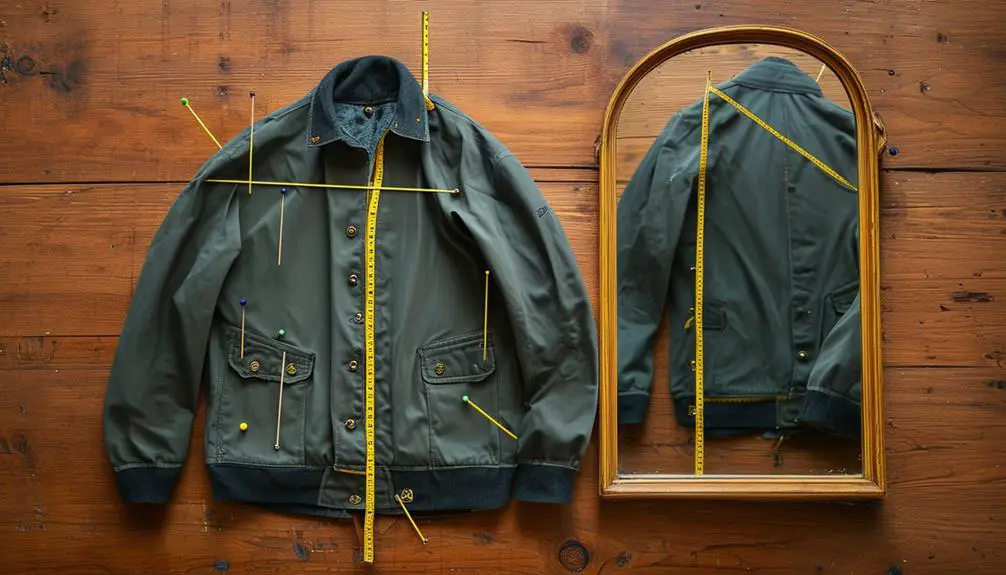
When you're evaluating the fit of a vintage Harrington jacket, start by checking the alignment of the shoulder seams with your actual shoulders. This guarantees you avoid a dropped shoulder look, which can throw off your entire appearance.
It's also beneficial to familiarize yourself with identifying vintage clothing elements, as this can help you discern the quality and craftsmanship typical of the era.
Next, pay attention to how snug the jacket feels around your chest. If it feels tight when zipped, it's probably time to reflect on a larger size, especially if you plan to layer underneath.
Don't forget about the sleeves; they should comfortably reach your wrist without any bunching. This detail is essential for achieving that polished look you're after.
Vintage Harrington jackets often have a slimmer cut compared to modern styles, so opting for a larger size can actually enhance both comfort and style.
Shoulder Seam Adjustments
Adjusting the shoulder seams of your vintage Harrington jacket can make a significant difference in achieving the perfect fit. Properly aligned shoulder seams should rest comfortably on your natural shoulder line, enhancing the overall silhouette of the jacket.
Most Harrington jackets feature raglan sleeves, which can complicate alterations, so it's vital to approach this task with care. Understanding the historical context of vintage clothing labels can also help guarantee that the integrity of the jacket is maintained during alterations.
If you find the jacket too tight at the shoulders, a professional tailor can let out the seams by up to 1 inch, provided there's enough fabric allowance. On the flip side, if the shoulder seams are too wide, they can be taken in by trimming the excess fabric and resewing the seam.
Just keep in mind that this might affect the sleeve fit, so communicate your preferences clearly to your tailor.
After making adjustments, always test the jacket's range of motion. Raise your arms, twist your torso, and verify you feel comfortable.
This step is fundamental to confirm that the jacket retains its intended style and function, allowing you to rock your vintage Harrington with confidence.
Taking in the Sides
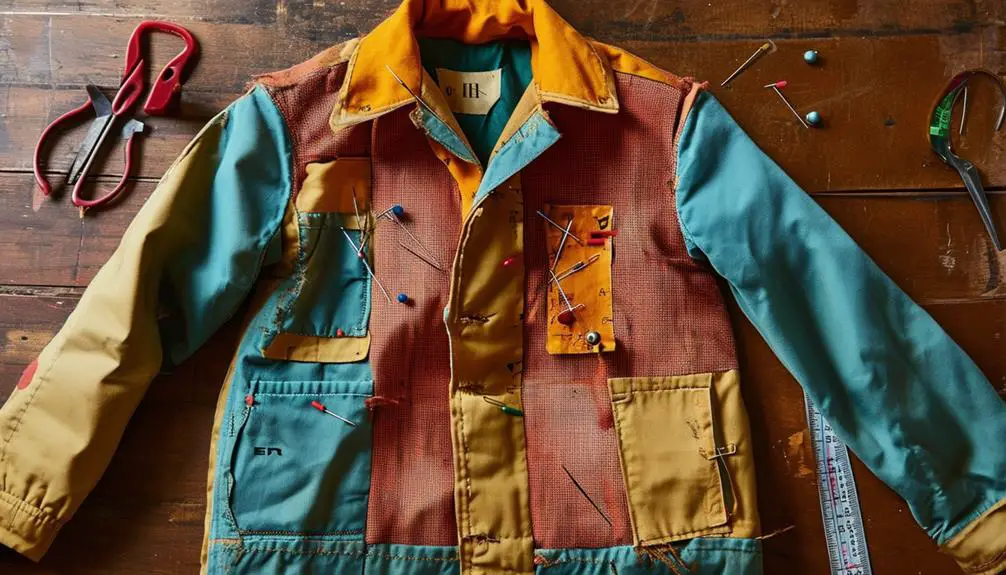
For a more tailored look, taking in the sides of your vintage Harrington jacket can create a flattering silhouette that accentuates your frame. Start by carefully unpicking the side seams with a seam ripper, guaranteeing you don't damage the fabric, especially if it's made from delicate materials like cotton or wool blends.
Next, try the jacket on and pinch the excess fabric inwards to measure the desired fit. Mark these adjustments with chalk to guarantee you get even alterations on both sides.
Once you've marked your adjustments, refer to the following table for a step-by-step guide:
| Step | Action | Tips |
|---|---|---|
| 1. Unpick Seams | Use a seam ripper to carefully remove fabric | Be gentle to avoid damage |
| 2. Measure & Mark | Pinch fabric and mark with chalk | Guarantee evenness on both sides |
| 3. Sew New Seams | Use a sewing machine with backstitching | Trim excess fabric for a clean finish |
After sewing, press the new seams flat with an iron to maintain the jacket's classic shape. Finally, try it on again to confirm the fit and make any minor tweaks if necessary.
Sleeve Length Modifications
After perfecting the fit along the sides, it's time to focus on the sleeves of your vintage Harrington jacket. Getting the sleeve length just right can elevate your jacket's overall look and guarantee it fits comfortably. Here's how to tackle this modification:
- Measure Accurately: Start by measuring the desired sleeve length from the shoulder seam. This step is essential to avoid any mistakes before making cuts.
- Remove Existing Cuffs: Use a seam ripper to carefully detach the current cuffs or hems. This allows you to adjust the sleeve length without damaging the fabric, preserving the jacket's integrity.
- Reattach with Care: After cutting the sleeves to your preferred length, reattach the cuffs or hems using a sewing machine. Make sure to reinforce the stitching for durability, especially if you've tapered the sleeves for a streamlined appearance.
Don't forget to try on the jacket after making these alterations to guarantee the sleeve length feels comfortable and complements the overall silhouette. A well-fitted sleeve can transform your vintage Harrington from ordinary to extraordinary!
Preserving Classic Style

A vintage Harrington jacket is more than just a piece of clothing; it's a timeless classic that embodies style and character. To preserve its iconic aesthetic while achieving a better fit, focus on maintaining essential features like the classic button collar and raglan sleeves. These elements define the Harrington's appeal, so any alterations should enhance rather than detract from its original charm.
When making adjustments, guarantee that you slim the sleeves or trim the hem without compromising the scalloped hem and flap pockets that give the Harrington its unique identity.
Opting for quality materials, like cotton blends, is vital to keep the jacket lightweight and versatile for different weather conditions.
Consider incorporating a Fraser tartan lining, a hallmark of the Baracuta Harrington, for a touch of authenticity and warmth.
As you tailor your jacket, pay close attention to construction details—like stitching quality and zipper type—to guarantee that the vintage integrity and durability remain intact.
Choosing Suitable Fabrics
Choosing the right fabrics for your vintage Harrington jacket is essential to achieving both comfort and style. When you're ready to select the materials, consider these key points:
- Cotton Blends: Opt for durable and breathable cotton blends, as they were commonly used in original Harrington designs. They'll provide the comfort you need while maintaining that classic look.
- Medium-weight Gaberdine: Go for medium-weight cotton gaberdine or similar fabrics. This choice will give your jacket the structured yet soft feel that Harringtons are known for, guaranteeing you look sharp without sacrificing comfort.
- Stylish Tartan Lining: To add a touch of warmth and flair, consider a tartan lining, like the Fraser tartan made famous by Baracuta. It can elevate your jacket's aesthetic while keeping you cozy.
Additionally, pay attention to fabric recovery; always choose high-quality ribbing for cuffs and hems to guarantee a snug fit.
If you're altering a vintage Harrington, make sure your chosen fabric can withstand modifications while preserving its original charm.
With these tips, you'll create a jacket that's both functional and fashionable.
Tools for Tailoring
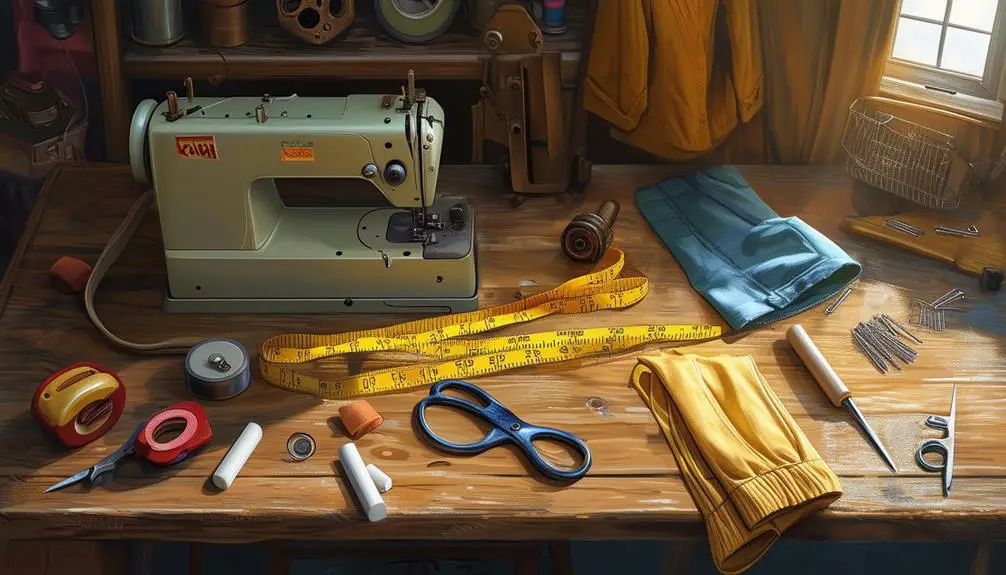
When tailoring a vintage Harrington jacket, having the right tools at your fingertips is fundamental for achieving that polished look you're after. Start with high-quality fabric scissors for clean cuts; they'll make a world of difference in your alterations.
A seam ripper is another must-have tool for tailoring, allowing you to swiftly remove any unwanted stitches without damaging the fabric.
For accurate sizing adjustments, grab a measuring tape—precision is key here. You'll also want tailor's chalk or a fabric marker to mark your alterations without leaving permanent traces.
Pressing is critical too, so invest in a good iron and ironing board to guarantee your seams and hems look sharp.
A sewing machine with various stitch options, including straight and zigzag stitches, is essential for reinforcing seams, assuring durability in the tailored areas.
Don't forget extra tools like pins and clips to hold fabric in place during your work. A tailor's ham can help shape the collar and sleeves, giving you that professional finish.
With these tools for tailoring in hand, you're well on your way to transforming your Harrington jacket into a unique masterpiece!
Adding Personal Touches
After you've gathered your tools and made the necessary adjustments, it's time to infuse your Harrington jacket with personal touches that reflect your unique style. Channeling the iconic vibe of Steve McQueen, you can create a jacket that's not just a piece of clothing but a statement.
Here are three ideas to help you add that personal flair:
- Custom Lining: Consider a vibrant tartan or patterned fabric for the interior. It adds personality while keeping the classic Harrington look intact.
- Patches and Pins: Attach custom patches or a Tamla Motown pin on the exterior. This reflects your interests and sets your jacket apart from the crowd.
- Contrasting Ribbing: Experiment with contrasting ribbing or cuffs. Ready-made acrylic options provide superior fit and recovery, guaranteeing your jacket looks sharp.
You can also personalize the pocket design with custom welts or decorative stitching. For that extra touch, embroidery or fabric paint can add your initials or a small emblem.
These details guarantee your vintage Harrington feels uniquely yours, while still embracing its timeless charm.
Common Alteration Techniques
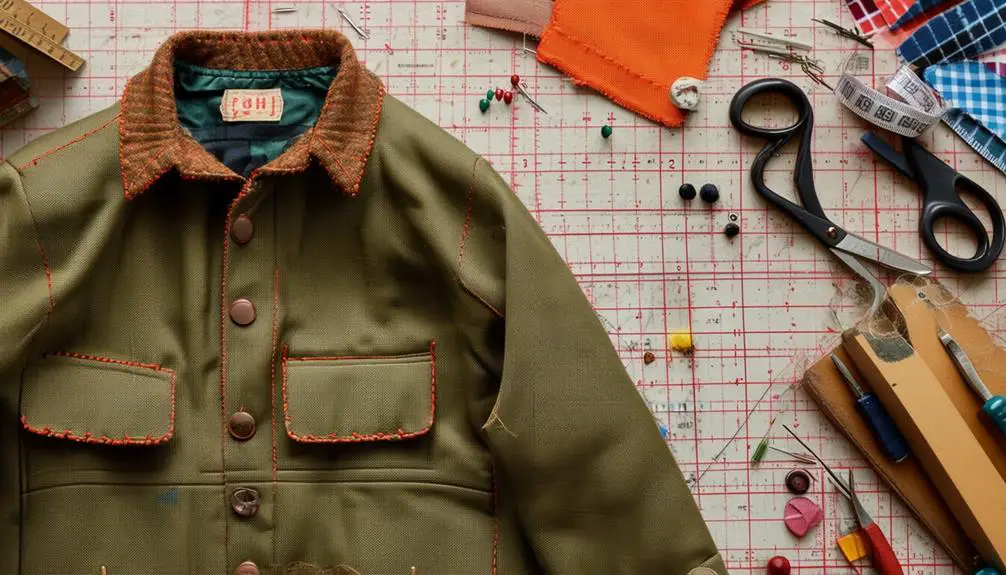
While the vintage Harrington jacket is a timeless piece, it often benefits from a few alterations to achieve that perfect fit. One key technique is sleeve slimming. By tapering the sleeves from the wrist to the shoulder, you can enhance the overall silhouette without sacrificing mobility. This simple adjustment can make a world of difference in how the jacket looks on you.
Another effective change is adjusting the hem. Shortening the hem creates a more fitted appearance and prevents excess fabric from bunching at the waist.
For a fresh look, consider modifying the collar. A more structured style or adjusted height can update the jacket while preserving its classic charm.
If the pockets are too bulky, resizing or repositioning them can improve both functionality and aesthetics.
Finally, don't overlook the cuffs. Replacing worn cuffs with new, properly sized ribbing or button cuffs can rejuvenate the jacket's appearance, ensuring a snug fit at the wrists.
Each of these common alteration techniques can transform your vintage Harrington into a tailored masterpiece, making it not just a piece of clothing but a statement of style.
Finalizing the Look
To achieve the perfect finish for your tailored vintage Harrington jacket, start by ensuring the shoulder seams sit snugly at the edge of your shoulders. This alignment is vital for a polished fit that enhances your overall appearance.
Once you've nailed the fit, it's time to add some personal flair.
Consider these three ideas for finalizing the look:
- Unique Accents: Add pins or patches that reflect your personality. This customization makes your jacket stand out and feel uniquely yours.
- Silhouette Adjustment: Pay attention to how the jacket drapes. If it feels bulky when zipped, leave it unzipped for a more relaxed vibe. This simple change can boost your style.
- Cuff Style: Final adjustments to sleeve length and cuff style can markedly alter presentation. Opting for button cuffs instead of elastic gives a more tailored and sophisticated finish.
Lastly, keep your jacket looking sharp by using a lint roller or fabric shaver to remove any lint or pilling.
With these steps, you'll successfully complete the process of finalizing the look of your vintage Harrington jacket!
Frequently Asked Questions
Can You Tailor a Harrington?
Yes, you can tailor a Harrington jacket! Focus on sleeve lengths and waist adjustments. Just remember to respect its original construction details to keep that classic style intact while enhancing your overall look and comfort.
How Can You Tell an Original Harrington Jacket?
To identify an original Harrington jacket, you'll want to look for the Baracuta label, button collar, raglan sleeves, and tartan lining. Authentic pieces often feature Talon zippers and high-quality stitching, showcasing their vintage charm.
Are Harrington Jackets Still Fashionable?
Yes, Harrington jackets are still fashionable! Their timeless appeal, versatile styling options, and cultural significance keep them relevant. You can effortlessly pair them with various outfits, making them a staple for any stylish wardrobe.
How Tight Should a Harrington Jacket Be?
A Harrington jacket should fit snugly around your shoulders, allowing movement without restriction. The body should permit layering without feeling tight. Aim for sleeves that end at your wrist bone for a polished, clean appearance.
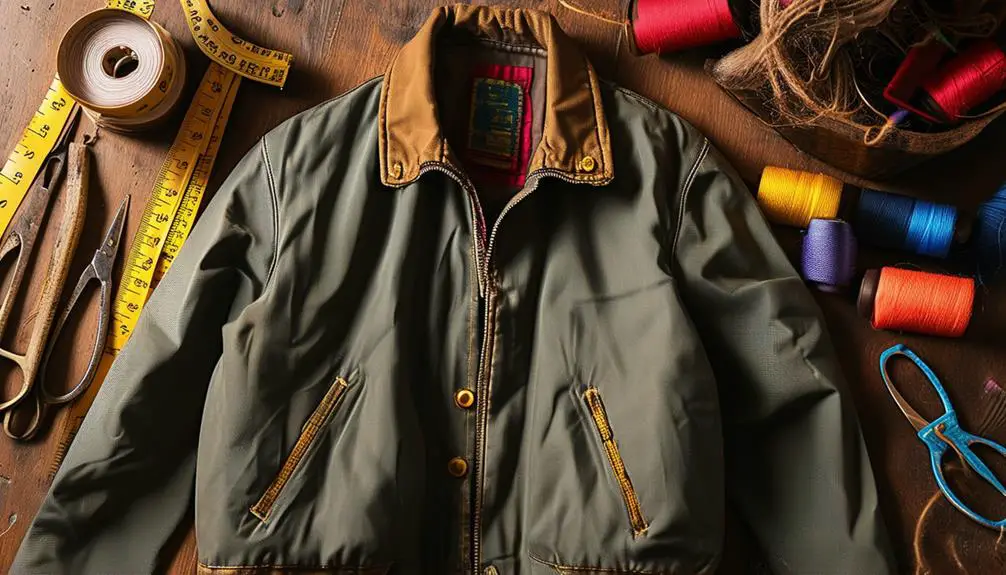


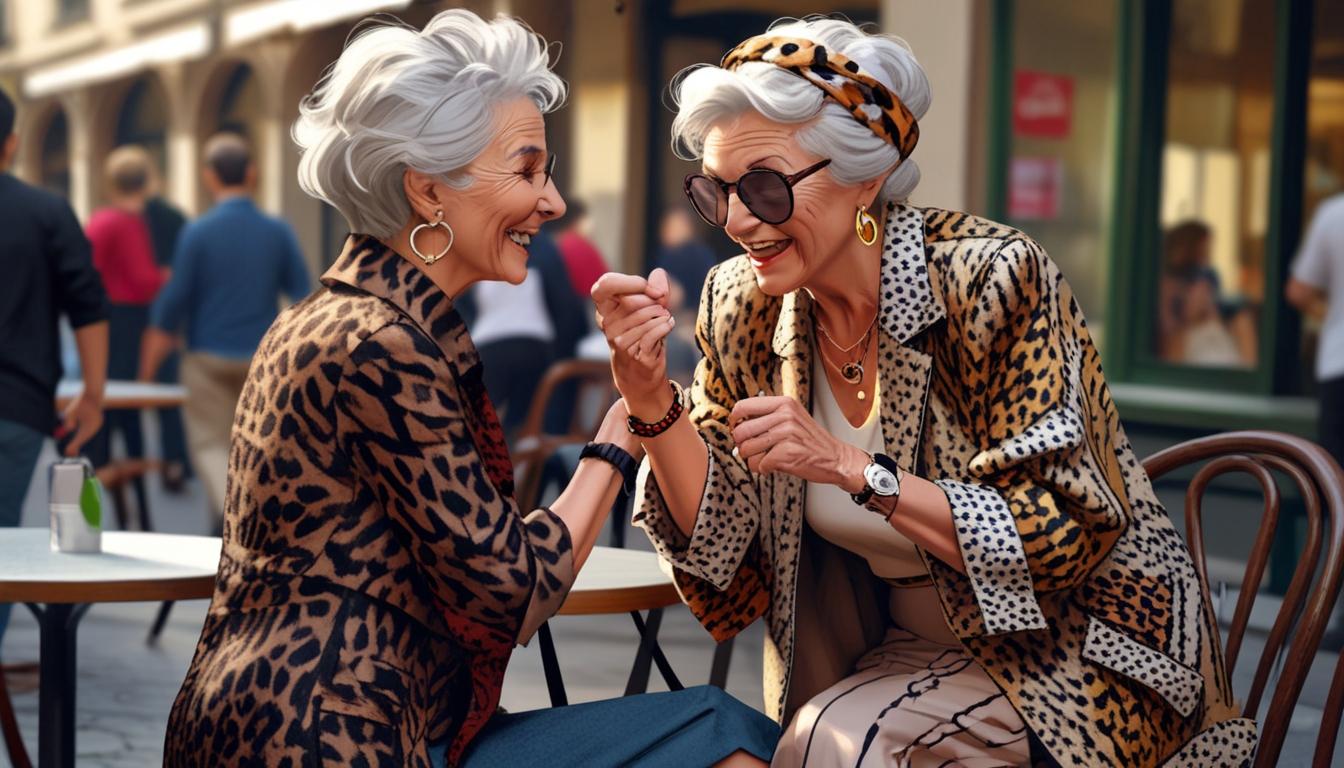

The Harrington jacket is a lightweight, waist-length outerwear piece known for its versatility and timeless style. Originally introduced in the 1930s by British brand Baracuta as the G9, it was designed as a practical golf jacket.